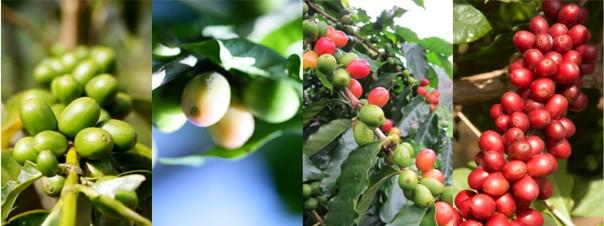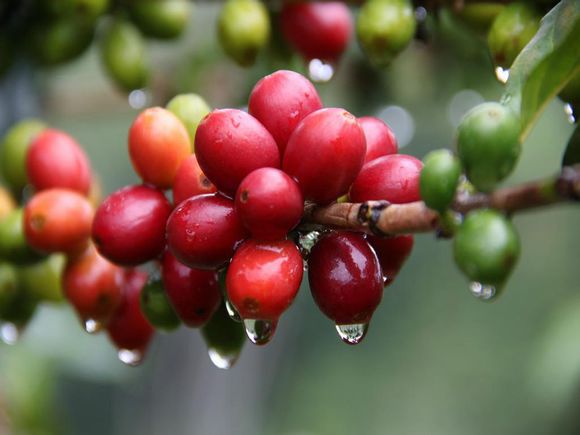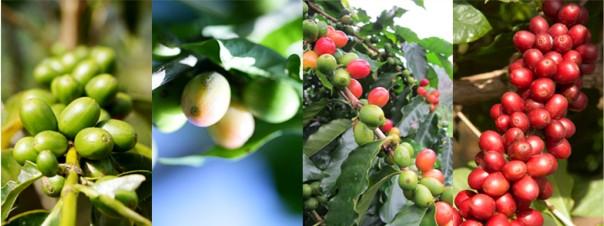Where can I buy coffee beans? how much is a jin of coffee beans? grow coffee beans at the price of Sidamo Sun Lion.
Coffee seeds cannot be grown directly with coffee fruits picked from coffee trees. Peeling coffee fruits is just like planting peanuts. If you plant a peanut with a shell in the soil, it cannot sprout. You must plant peanuts. It is the same with medium coffee. If you have coffee fruit in your hand, you can bask it in the sun first and shake it until it is shaken. (like sun-dried peanuts), you can peel off the shell of the coffee fruit and plant it with coffee seeds inside. Coffee trees must be planted near the equator in the tropics and subtropics at latitudes 23 °N and 25 °S. In China, only Taiwan, Hainan and Yunnan can grow coffee trees.
The cultivation of coffee beans
Indoor growth is best placed in a place with plenty of light. Non-direct sunlight or fluorescent lighting such as an office or kitchen has good light conditions.
(watering)
Place the tree in a sink or container and water until water leaks from the drain at the bottom of the basin. Repeat this step until all the roots are wet. It is usually OK to water it once a week. Don't keep the soil wet all the time. Don't water too much! To avoid getting too wet, keep the water tray under the flowerpot dry.
(fertilization)
You can buy liquid fertilizer from the horticultural shop and fertilize it according to the method of indoor plants.
(temperature)
Coffee is a subtropical plant, growing at about 61F ~ 74F (16C ~ 23C). It can withstand temperatures of about 55F (12C) to 80F (27C) and still bloom. Don't let it get cold! If you put it in the sun or in a hot place, water more so as not to wither the plants.
Country: Ethiopia
Grade: G1
Production area: Guji
Planting altitude: 1800-2000m
Soil type: volcanic laterite
Annual rainfall: 1100-1200 cm
Treatment: insolation
Variety: native species (Heirloom)
Disposal site: Sirsa Cooperative
Raw bean specification: 17-18 mesh
Flavor: Jasmine, honey, citrus, ripe berries
The coffee flavor of Sidamo is very diverse, and the different soil types, microclimate and countless native coffee species make the coffee produced in each town have obvious differences and characteristics. In 2010-12, three consecutive times won the United States authoritative coffee review website coffeereview92 to 94 high marks, which shows the extraordinary value of raw beans in this area! The territory is covered by towering mountains, highlands, plateaus, valleys and plains with a variety of topography. The geology of the area belongs to the fertile and well-drained volcanic soil, which is nearly two meters deep and the surface soil is dark brown or brown. The biggest advantage of this place is that the soil fertility is maintained through the circulation of natural organic matter, with the withered leaves or litter of the surrounding trees and the residual roots of plants as natural fertilizer. This batch is produced by Sirsa Shilcho Cooperative near DillaTown. The cooperative was founded in 1976 and is currently a member of the Sidamo Farmers' Cooperative Union SCFCU (SidamoCoffeeFarmerCooperativeUnion). We have screened the coffee again and again and selected this batch for excellent flavor.

Important Notice :
前街咖啡 FrontStreet Coffee has moved to new addredd:
FrontStreet Coffee Address: 315,Donghua East Road,GuangZhou
Tel:020 38364473
- Prev

Coffee bean seed price how much coffee bean planting coffee bean price seed coffee raw bean sun plus snow
Coffee seeds cannot be grown directly with coffee fruits picked from coffee trees. Peeling coffee fruits is like planting peanuts. If you plant a peanut with a shell in the soil, it cannot sprout. You must plant peanuts. It is the same with medium coffee. If you have coffee fruit in your hand, you can first bask it in the sun and shake it until it is shaken inside.
- Next

Where can I buy coffee beans? how much is a kilo of Kenyan coffee AASL28SL34 Yala Manor Coffee?
Coffee seeds cannot be grown directly with coffee fruits picked from coffee trees. Peeling coffee fruits is like planting peanuts. If you plant a peanut with a shell in the soil, it cannot sprout. You must plant peanuts. It is the same with medium coffee. If you have coffee fruit in your hand, you can first bask it in the sun and shake it until it is shaken inside.
Related
- Detailed explanation of Jadeite planting Land in Panamanian Jadeite Manor introduction to the grading system of Jadeite competitive bidding, Red bid, Green bid and Rose Summer
- Story of Coffee planting in Brenka region of Costa Rica Stonehenge Manor anaerobic heavy honey treatment of flavor mouth
- What's on the barrel of Blue Mountain Coffee beans?
- Can American coffee also pull flowers? How to use hot American style to pull out a good-looking pattern?
- Can you make a cold extract with coffee beans? What is the right proportion for cold-extracted coffee formula?
- Indonesian PWN Gold Mandrine Coffee Origin Features Flavor How to Chong? Mandolin coffee is American.
- A brief introduction to the flavor characteristics of Brazilian yellow bourbon coffee beans
- What is the effect of different water quality on the flavor of cold-extracted coffee? What kind of water is best for brewing coffee?
- Why do you think of Rose Summer whenever you mention Panamanian coffee?
- Introduction to the characteristics of authentic blue mountain coffee bean producing areas? What is the CIB Coffee Authority in Jamaica?

